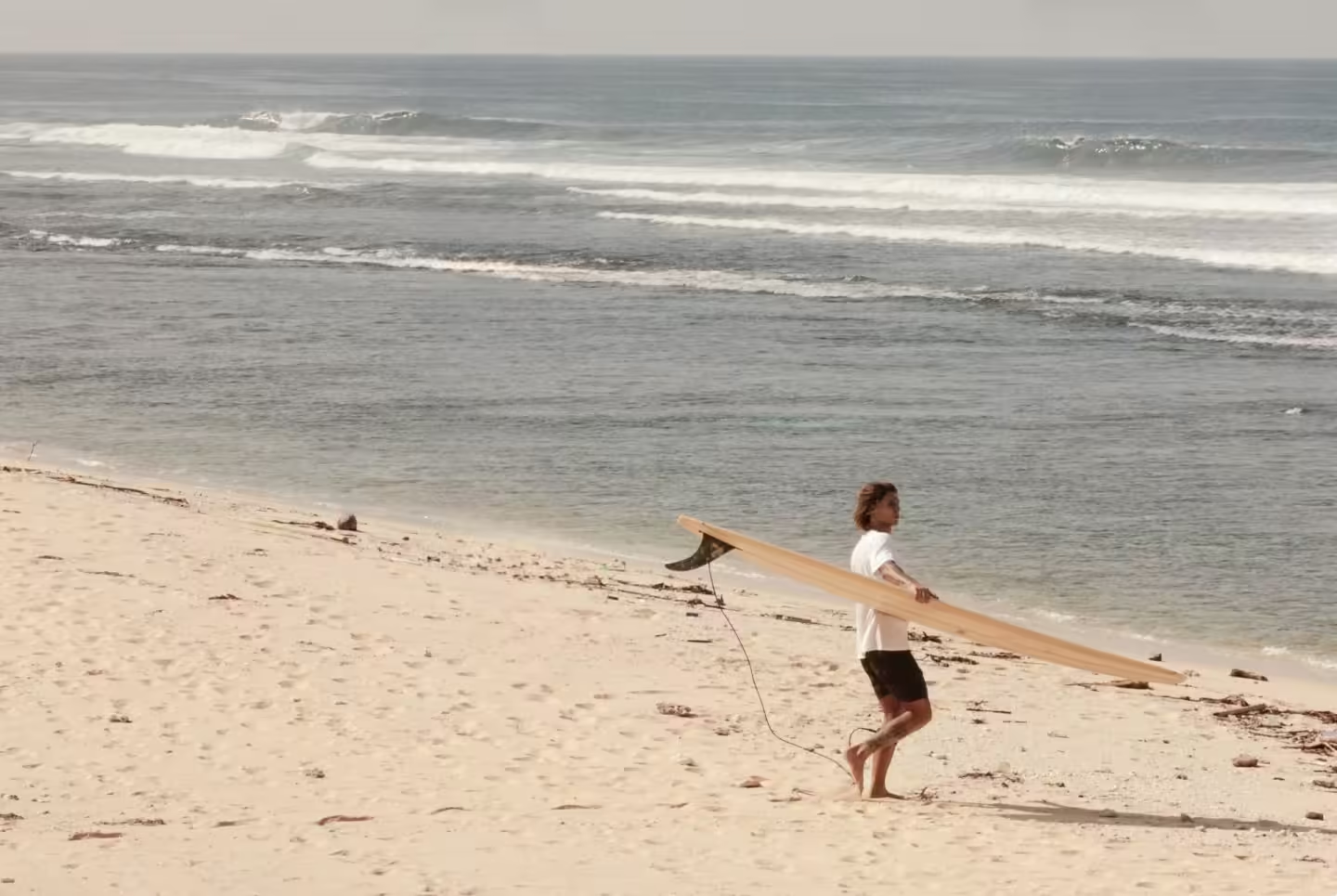How To Prevent Nosediving When Surfing
Imagine this: you’re paddling hard, anticipating the perfect moment to pop up and ride the wave.
The ocean’s power is pushing and lifting you, you feel the board start to lift beneath you and you’re pumped. You jump to your feet, ready to shred.
But suddenly, you feel the nose of the board drop and before you know it, your face is first in the water. Ouch. Nose diving isn’t just painful, it can also be embarrassing and frustrating.
Worry no more! With a little bit of practice and some helpful tips, you can learn how to prevent those pesky nose dives and enjoy the waves without any face plants.
In this post, we take a look at what causes nosediving and how you can make sure it never happens again.
What Is Nosediving?
A nosedive is a frequent occurrence in the surfing world, one that every surfer will likely experience.
While it may be embarrassing, nosediving while surfing doesn’t necessarily mean you’re doing something wrong.
Even experienced surfers can experience a nosedive from time to time, especially when trying to ride a particularly challenging wave.
It can be especially frustrating when you feel like you’ve got the perfect wave lined up, only to wipeout in front of your friends, and fellow surfers.
We cannot be completely attached to our surfboards and sometimes we may not realize that the front of the surfboard is submerged in the water until it is too late.
This can cause the back of the surfboard to launch upwards and send us flying, and nothing can be done when the nose of a surfboard penetrates beneath the water’s surface.
Though they are commonly encountered by beginners, nosedives may still occur while transitioning to a different board or during steep waves that move too fast.
Why Does Nosediving Happen?
Nosediving usually happens when a surfer’s weight is positioned too far forward, putting too much pressure on the front of their board, then causing the nose of their surfboard to unexpectedly plunge under water.
This is why while learning to surf, it is important to find your comfortable and balanced position on the board.
Longboards are more prone to nosediving due to their heavier and less responsive nature, which makes it difficult for surfers to make quick adjustments to prevent it.
To prevent nosediving, it is important to keep the front of the surfboard a few inches above the water’s surface while paddling.
As a general guideline, aim for the nose of the board to be two to three inches out of the water. But wait, we got more tips for how to prevent nosediving.
Let’s get that nose of out the water!
How to Avoid Nosediving?
There are 3 key ways to avoid nosediving and it’s important to keep them all aligned. Make sure to read carefully and practice when you have the opportunity.
Body Positioning
Proper body positioning on the surfboard is essential for riding waves successfully as small adjustments in your stance can greatly impact your paddling speed, wave entry, and balance.
If you are too far back on the board, you may struggle to paddle efficiently, pop up in the proper position, maintain balance, and the ideal position allows the board to move smoothly through the water.
Therefore, make sure you move your body backward on the board, positioning your feet off the back end of the board.
Watch The Waves
Staying focused on the wave is crucial for successful surfing. Without paying attention to the wave, you may react too late and be unable to make adjustments.
Keeping your eyes on the wave allows you to anticipate changes and nuances, which is essential for making smooth, timely movements.
Remember, paddling with your eyes on the shore will not get you anywhere but closer to the shoreline
When looking for a wave to catch, choose one that is not closing out. If the wave is strong and steep, angle your surfboard in the direction you wish to go.
When you found the one, make sure you paddle as fast as you can but efficiently, get ready to catch it by arching your back and have your head, neck, and chest up.
Ride The Wave
Now that’s the golden moment – to avoid nosediving, pay close attention to the front of your surfboard.
If the nose starts to dip, it’s time to get off your stomach and pop up. You will feel the tail of the board lift and the wave become steeper as the nose dips.
Therefore, if your board enters the wave, pop up fast and as soon as you can. Grip the rails and place your hands by your waist to help you lift yourself up and get your fit underneath.
Shift your body weight toward the rear of the surfboard – place your back foot directly over the fins, while keeping your front foot in the middle of the board.
Finally, maintain a low center of gravity to keep your balance and stability, and ride the wave by crouching into a surfing stance.
The key is to react quickly and efficiently to the movements of the wave and your board.
If you manage to stand up before reaching the trough of the wave, you will likely be successful in riding it.
Conclusion
So, there you have it – the ultimate guide to avoiding the dreaded nosedive. Just remember, keep your eyes on the wave, your body balanced on the board, and your board nose a few inches above the water.
Don’t be embarrassed if you get nosediving, everybody does or had in their surfing past and it’s just part of surfing.
Follow these tips and you should be able to enjoy riding those beautiful waves without worrying about nosediving.



